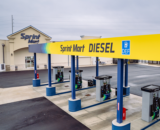Stop Watch Archives is a regular column that features highlights from a Stop Watch article from our archives. Stop Watch, NATSO's bimonthly magazine, provides in-depth content to assist NATSO members in improving their travel plaza business operations and provides context on trends and news affecting the industry. Delivery of Stop Watch is a member only benefit. Join NATSO today to receive a copy of Stop Watch every other month.
Even half a cent per gallon can add up to thousands of dollars for fleets, which is why more and more carriers are relying on fuel optimization software to direct them to locations where they can get the most bang for their buck. Software providers told Stop Watch that fuel price, location and amenities all factor into a carrier’s decision-making process. To increase their odds of becoming a location of choice, truckstops and travel plazas can ensure information on their amenities, geographical location and fuel prices is correct.
How Do Optimizers Work?:
Optimizers:
- Pull the latest pricing and amenity information from daily raw data feeds that typically originate from the Oil Price Information Service (OPIS) or a fuel card company;
- Look at rack pricing, tax information and the transportation cost to get the fuel to the stop;
- Overlay fueling locations with a fleet’s route to determine where a driver should fuel and how much he should purchase; and
- Factor in any fleet discounts. When it comes to buying fuel, fleets either pay the retail price that is posted or negotiate a contract rate in advance. Major fleets typically establish discounts with several chains and independent locations.
What Should Truckstops Do to Optimize Their Odds?:
- A location’s latitude and longitude need to be correct. To determine their latitude and longitude, truckstop operators can use a GPS device on their own or turn to a company, such as Maporama to get the coordinates. Next, an operator can confirm its data with OPIS and fuel card providers to ensure optimizers have the latest information.
- Update their amenities. The amenities truckstops offer can help drive traffic to their locations even if they don’t have the lowest price on fuel, for example their size, amount of parking and dining options. If operators invest a lot of money in amenities, they need to get that information out.
- Ensure amenities are correct. To ensure their amenities are current, truckstop owners can work with software and data providers to verify their listings and should update the information when amenities change.
/// Read the original full article on Optimizing Your Odds.
Subscribe to Updates
NATSO provides a breadth of information created to strengthen travel plazas’ ability to meet the needs of the travelling public in an age of disruption. This includes knowledge filled blog posts, articles and publications. If you would like to receive a digest of blog post and articles directly in your inbox, please provide your name, email and the frequency of the updates you want to receive the email digest.



